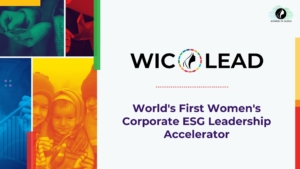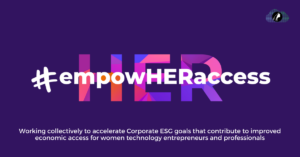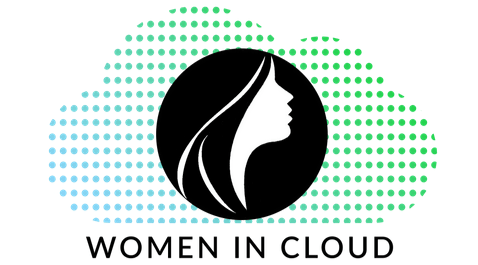Corporate sustainability has come a long way since the early days, when executives were focused on the “triple bottom line”—a commitment to environmental, social, and economic goals. These days, sustainability is not just a public relations effort; it is a fundamental part of the business.
When was the last time you think about how your company engages with sustainability?
You’re not alone. In fact, most CEOs and business leaders don’t often consider their corporate sustainability engagements. That’s why we’ve put together five ways that executives can improve their company’s engagement with sustainable practices.
Start with a working definition of ESG — and set some achievable goals.
As a business leader, you’ll want to set some concrete goals that are based on ESG metrics specific to the industry in which your company operates. Start small and be realistic about what your team can realistically achieve within a certain period of time. For example, if your industry is energy production, you might start by committing to a 10% reduction in energy use at all facilities over the next three years. This goal is measurable (simply compare this year’s energy use against last year’s) and specific (10%). It also has a clear endpoint (three years). You may not be able to reach that goal immediately: your facilities were built in an era before environmental responsibility was top of mind, so you may need to invest capital into new equipment or retrofitting old equipment before you can reduce energy usage by 10%.
Construct an Corporate ESG Framework.
Constructing a framework to determine how to prioritize and implement ESG practices is vital. It starts with picking your framework such as SASB, TCFD, GRI, SDGs and measuring your MSCI ESG Ratings. These will help you determine which ESG factors are important to your business, industry, and stakeholders. These standards should be tailored to meet the needs of your organization, as well. ESG Focused framework development involves identifying internal expertise and external partners that can assist with the process. Once you identify what those ESG factors are, you must develop a strategy for implementing them into your organization’s operations in order to achieve measurable results.
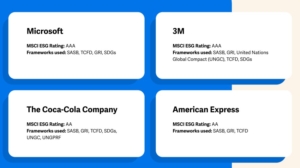
Get CEO and Senior leaders on board.
Don’t expect your ESG strategy to gain momentum or even see the light of day without the support of your company’s CEO and senior leadership. When you’re just starting out, your role will be more about collecting data than coming up with strategies, so start by introducing yourself to senior leaders. You’ll want to book a meeting with the CEO and her inner circle (COO or CFO, if you have them) to discuss ESG goals. Explain that you would like their input on what they think ESG should look like for your organization. If they aren’t already familiar with ESG as a concept, take a few minutes to give them some background information and explain that you are taking these initial steps in order to get ahead of possible regulations and meet investor expectations, which will help preserve growth over the long term. With these points in mind, ask the CEO if there are any aspects related to sustainability or social impact that she thinks could be improved within the company (e.g., waste management), and then take notes on how she answers these questions.
Once you’ve wrapped up this discussion and taken note of what they said, schedule another meeting 10-15 days later where you can share some concrete next steps based on their feedback from last time. At this point it’s likely that many people will still be curious about exactly what needs to happen for an ESG strategy at your company—the key is providing clear direction instead of being overly vague about why it matters or allowing stakeholders to fill in their own blanks based on assumptions they may have heard elsewhere but aren’t relevant for your industry/company specifically.
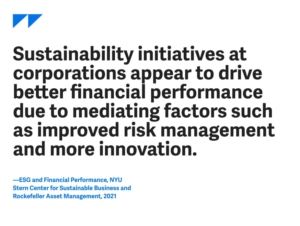
Identify and Prioritize ESG Reporting and Disclosures Needs
- Identify and prioritize ESG reporting and disclosure needs. This should include analyzing your company’s current state as well as understanding its competitive landscape.
- Establish metrics to track key ESG performance indicators. By establishing a baseline, you can more accurately measure progress toward your goals. As you select your key metrics, keep in mind that the objective is to create a system that is both relevant and easily accessible for multiple stakeholders. To ensure relevance, consider using framework-specific metrics (e.g., those that align with MSCI ESG Scores) wherever possible—it will make it easier for those familiar with the MSCI standards to compare you to other companies using MSCI, who are also likely reporting on similar metrics, which allows them to understand how your company stacks up against competitors.* Be transparent in disclosing ESG information—optimally through a publicly available report which covers material issues and provides an independent assurance statement as appropriate
Recruit Women Leaders to Lead ESG
Although the world of corporate responsibility is still largely male-dominated, women are making their mark as rising leaders in Asia. The reason? They tend to take a more holistic approach to ESG issues and have better relationships with stakeholders. These two traits go hand in hand in building trust among those that make decisions, which can lead to positive business outcomes down the line. As companies continue to grow and their missions expand, it’s important that they put their arms around sustainable practices—but it’s equally important that they find ways to make them feel like home for all employees.
This year more and more enterprise companies are in search of comprehensive global sustainability operating models and developing more leadership opportunities for women.
So, where do they start? To address the market needs, we are launching the WICxLEAD, the next generation Corporate ESG Women’s Leadership Accelerator, designed to empower corporate women and entrepreneurs to ignite economic access. Our scholars will learn how to lead and influence digital transformation projects through cloud and AI technology, teaching them how to grow their executive presence, personal brand identity, public speaking impact, global access creation and community development strategies giving them a powerful platform to accelerate as industry ESG influencers and purpose-driven leaders.
Identify Digital Transformation Solution
Digital transformation, or the use of digital technologies to solve problems and create value in an organization, is a powerful tool for helping your company achieve its ESG goals. With digital transformation, you can show employees and customers that your company is committed to change and improvement—and by demonstrating this commitment through positive action, you’ll be able to prove your worth as a shareholder.
Successful companies know that taking care of their people will lead to better business performance in the long run. A digital transformation solution that focuses on creating a diverse and inclusive workplace is an excellent way to show employees (and potential talent) that they’re valued by the company.
Additionally, moving business processes online increases efficiency—which means fewer hours worked for employees who need time off for family or personal matters, less wasted materials from paper-based forms, and more streamlined production cycles. Even if the process itself can’t be automated or digitized just yet, it’s still a great idea to give employees mobile tools so they can work faster from anywhere. In other words: with less time spent doing menial tasks like paperwork or waiting around for approvals from managers at headquarters, workers have more time to focus on innovative projects and produce higher quality work overall. Here is an example of how FEDx leveraging digital transformation efforts to reduce carbon footprint.
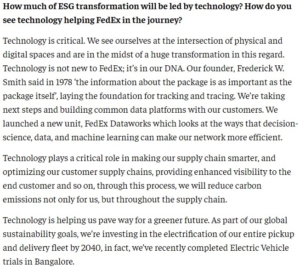
Establish Community Partners to Scale company’s impact.
- Co-brand and co-develop solutions with a dedicated community partner like Women In Cloud
- Leverage social media campaigns to spread the word about your partnership and efforts, as well as its success stories.
- Use community partnerships to help with funding your programs, particularly those in underserved communities.
- Community partners are also useful for testing ideas before scaling up, and have access to volunteers that can be used for small-scale projects or events before larger scale implementation begins.
We believe when we work together to make our planet and people healthy through our actions, we all can accelerate our growth in ways that generate sustainable outcomes including profits.

